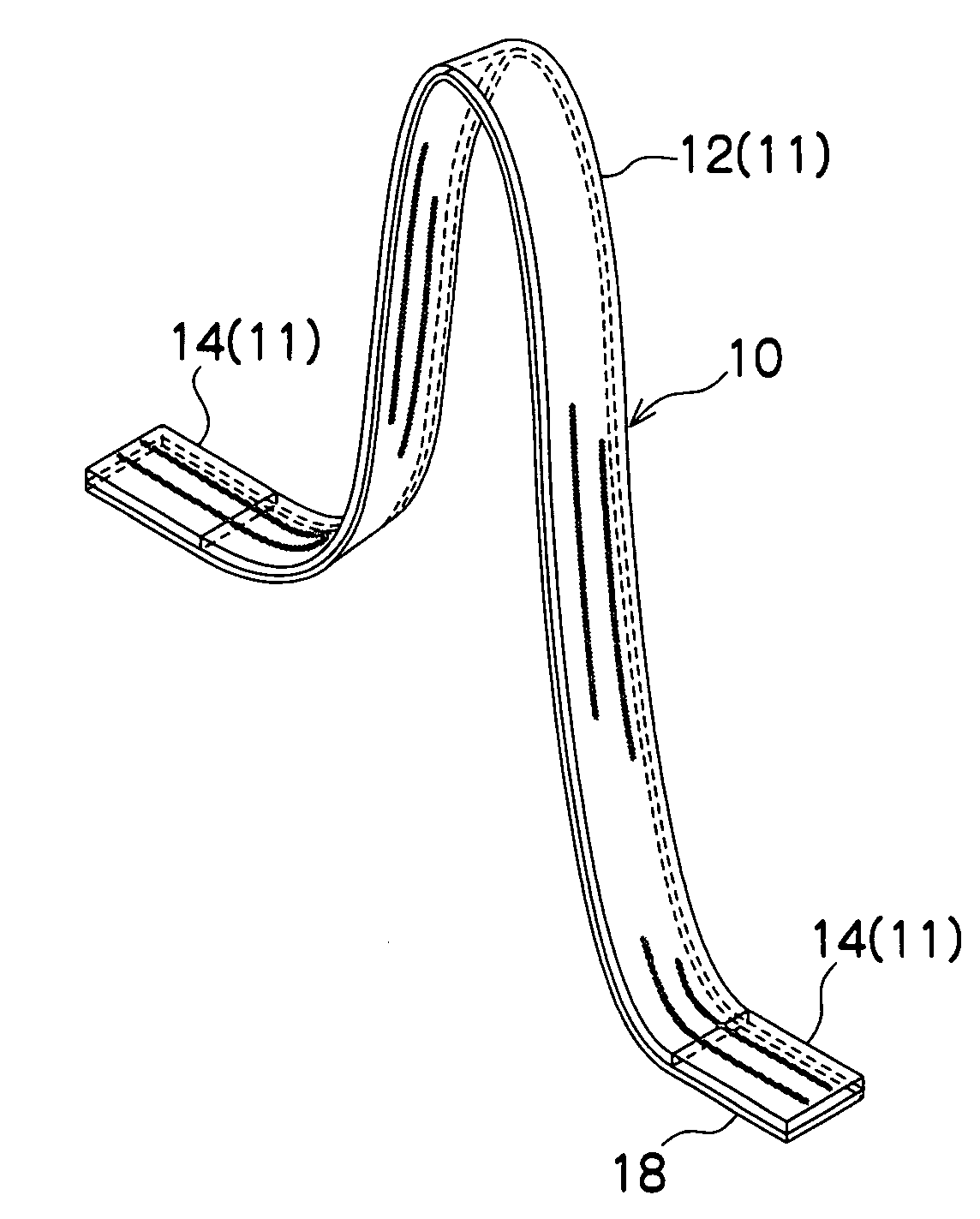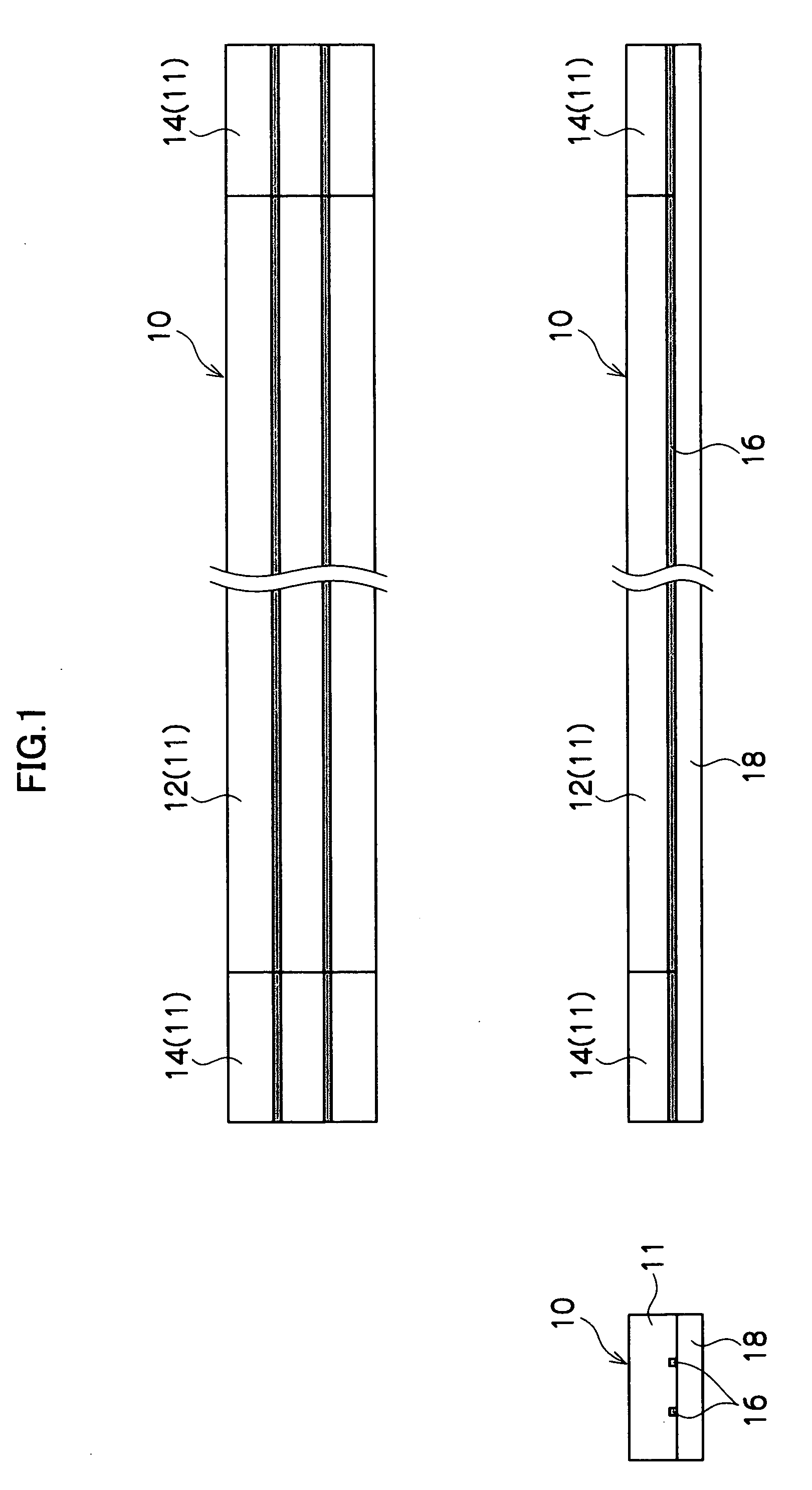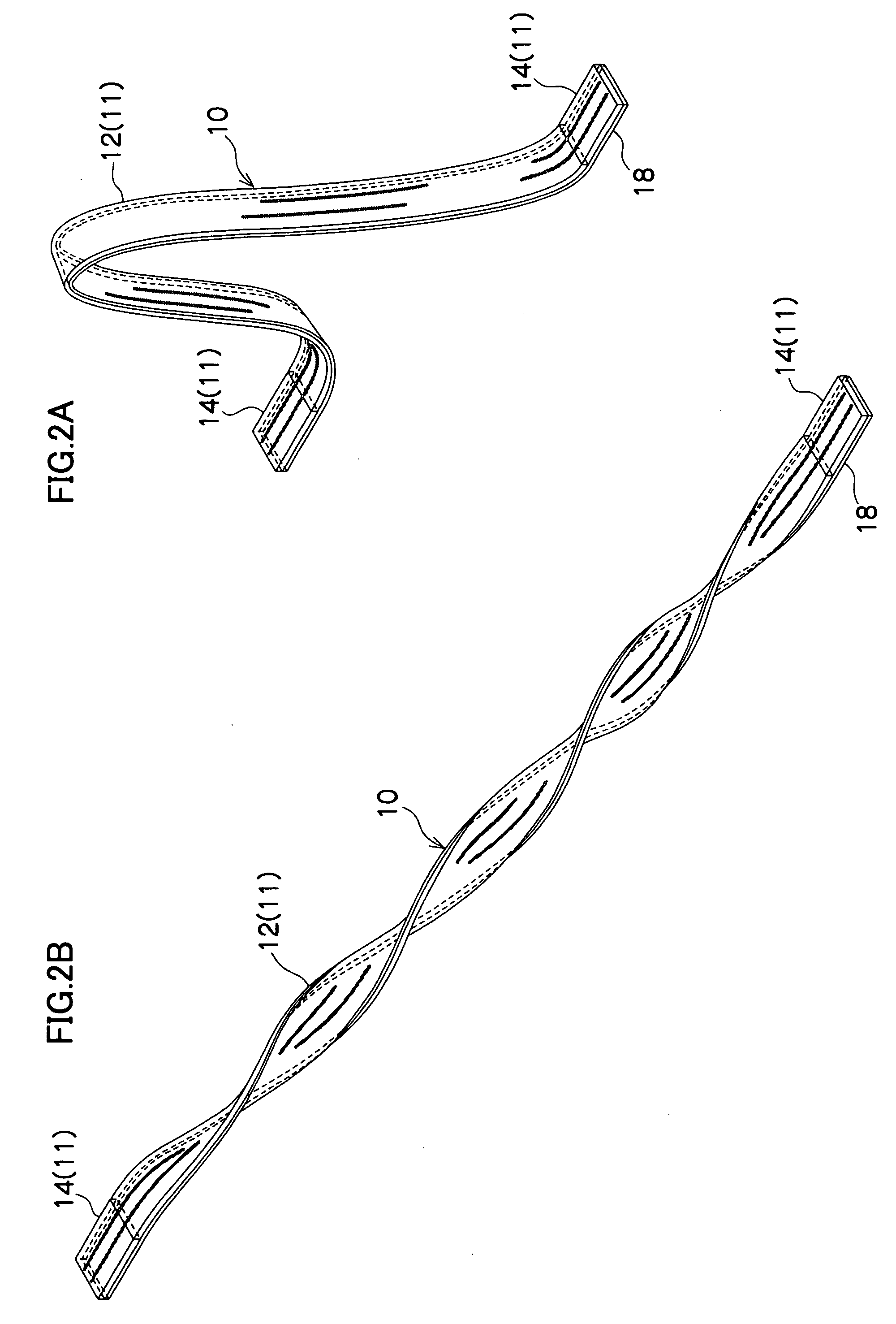Flexible optical waveguide
a flexible, optical waveguide technology, applied in the direction of optical waveguide light guide, instruments, optics, etc., can solve the problems of high cost of (2), insufficient refractive index difference between the core portion, and the precision of the core diameter that is obtained, so as to reduce the loss of connection and achieve high accuracy , the effect of high accuracy
- Summary
- Abstract
- Description
- Claims
- Application Information
AI Technical Summary
Benefits of technology
Problems solved by technology
Method used
Image
Examples
example 2
[0128] First, a polymer optical waveguide film is prepared in the same manner as in Example 1.
[0129] Then, using a dicing saw equipped with a blade for silicon which is angled at 45°, both ends of the polymer optical waveguide film are cut to an angle of 45° relative to optical axes, and the cores with 45° mirror surfaces are exposed.
[0130] In this case, the shapes of the cores at the 45° mirror surfaces are flat, with Ra being not more than λ / 10. With an 850 μm LED as a light source, excess losses measured for the 45° mirror surfaces are 0.8 dB.
[0131] Thus, when the hard cladding portions are provided at the two ends of the polymer optical waveguide film, it is possible to form the 45° mirror surfaces accurately.
example 3
[0132] First, a polymer optical waveguide film 50, which is provided with hard cladding portions 54 and a soft cladding portion 56 on a cladding film base material 52, is fabricated in the same manner as in Example 1 and, in the same manner as in Example 2, 45° mirror surfaces 56A are formed at end portions of the hard cladding portions 54. Then, the cladding film base material 52 and hard cladding portions 54 are cut orthogonally to the optical axes, at positions 50 μm from distal ends. Thus, as shown in FIG. 6, the polymer optical waveguide film 50 is provided with a 45° mirror surface 56A and an orthogonally cut surface 52A at each of two end portions.
[0133] Meanwhile, a silicon wafer with thickness 625 μm is formed by an RIE method, to fabricate a silicon submount 60 as shown in FIG. 7. Opening portions 62 and abutting surfaces 64 are formed at the silicon submount 60. The opening portions 62 accommodate a light-reception element and a light-emitting element, and the abutting s...
example 4
[0155] Fabrication of Master
[0156] By a similar manner as in Example 1, two protrusion portions for cores with square cross-sections (width 50 μm, height 50 μm, length 80 mm) are formed, and five protrusion portions for bridging members which link the core protrusion portions at each of two ends in the length direction (width 50 μm, height 50 μm) are formed. Here, a distance between the two protrusion portions is set to 250 μm and distances between the five bridging member protrusion portions are set to 500 μm.
[0157] Fabrication of Mold Fabrication is performed by the same process as in Example 1.
[0158] Fabrication of Cladding Film Base Material and Cores Fabrication is performed by the same process as in Example 1.
[0159] Fabrication of Cladding Portion Fabrication is performed by the same process as in Example 1.
[0160] Here, a light source (manufactured by Advantest Corporation) and a light detector (manufactured by Ando Electric Co., Ltd.) are used to perform a measurement of...
PUM
 Login to View More
Login to View More Abstract
Description
Claims
Application Information
 Login to View More
Login to View More - R&D
- Intellectual Property
- Life Sciences
- Materials
- Tech Scout
- Unparalleled Data Quality
- Higher Quality Content
- 60% Fewer Hallucinations
Browse by: Latest US Patents, China's latest patents, Technical Efficacy Thesaurus, Application Domain, Technology Topic, Popular Technical Reports.
© 2025 PatSnap. All rights reserved.Legal|Privacy policy|Modern Slavery Act Transparency Statement|Sitemap|About US| Contact US: help@patsnap.com



